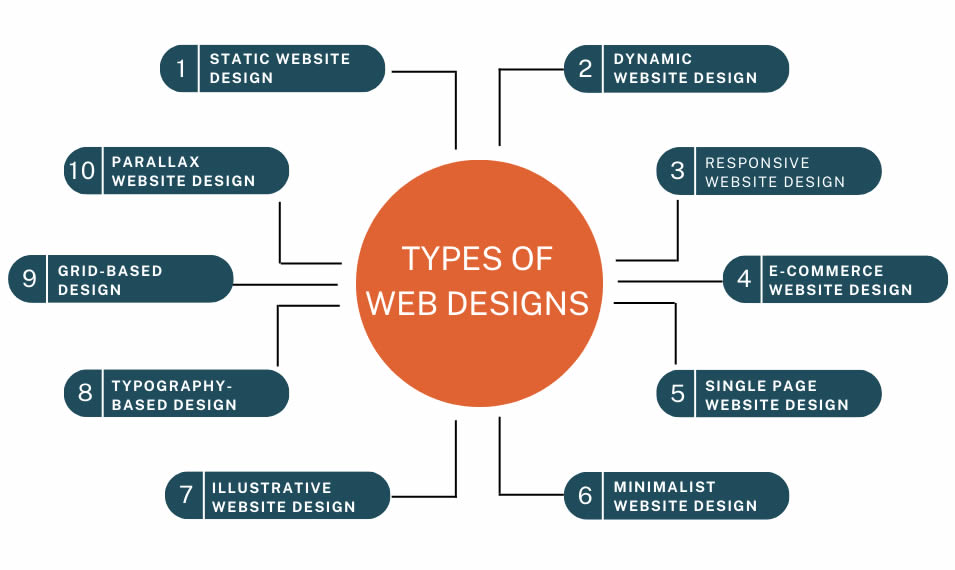Why Web Design and User Experience Must Go Hand-in-Hand for Success
Why Web Design and User Experience Must Go Hand-in-Hand for Success
Blog Article
Elevate Your Online Presence With Sensational Website Design Tips and Trends
The interaction of aesthetic charm, current design fads, and individual experience plays a critical function in attaining this objective. The subtleties of efficient design prolong beyond aesthetics; understanding crucial strategies for optimization can significantly influence your success.
Importance of Visual Appeal
This fact highlights the essential role that aesthetics play in individual interaction and retention. Reliable aesthetic style encompasses aspects such as color schemes, typography, format, and imagery, all of which add to a attractive and cohesive user experience.
Moreover, a visually attractive internet site instills a feeling of reputation and professionalism and trust. Users are more probable to trust a site that looks well-structured and sleek, which can significantly impact conversion prices. Conversely, a unsightly or chaotic layout can lead to high bounce prices, as users might perceive the website as undependable or out-of-date.
Moreover, the visual aspects of a site can share brand name identity and values (Web design). Regular use of branding elements, such as logo designs and color combinations, reinforces acknowledgment and fosters a much deeper link with the audience. To conclude, prioritizing visual allure is necessary for creating appealing, credible, and brand-aligned online experiences that reverberate with users
Present Design Patterns
Modern web design is continuously evolving, and staying upgraded with current patterns is essential for producing impactful on the internet experiences. One famous fad is the increase of minimalism, identified by tidy lines, adequate white space, and a concentrate on crucial elements. This method not just improves usability however likewise enables web content to take facility stage.
Furthermore, dark mode interfaces have actually gained appeal, providing customers with an aesthetically striking alternative while lowering eye pressure. This pattern lines up well with customer preferences, supplying a contemporary aesthetic that is both stylish and practical.
Another significant trend is the incorporation of vibrant typography. Designers are increasingly making use of huge, expressive typefaces to create aesthetic power structure and communicate brand messages effectively. Paired with dynamic color palettes, this pattern includes dynamism to website.

Essential Layout Components
Efficient internet style depends upon several crucial design aspects that with each other create a cohesive and interesting customer experience. The initial of these aspects is format, which determines just how material is organized on the web page. A well-structured layout not only improves readability but additionally guides customers with the site seamlessly.
Color plays a critical duty in layout, influencing emotions and brand understanding. An unified shade palette can evoke certain feelings and develop an aesthetic power structure, therefore accentuating essential aspects. In a similar way, typography is important; the choice of typefaces should align with the brand identity and guarantee legibility across gadgets.
Additionally, whitespace is usually ignored but is important for producing anonymous equilibrium. It assists protect against mess, allowing individuals to focus on the vital aspects without distraction.
Lastly, uniformity across all design elements strengthens brand name identification and makes navigating instinctive. By diligently integrating these necessary layout elements, internet designers can create useful and aesthetically enticing websites that astound site visitors and encourage interaction.
Individual Experience Optimization
A smooth customer experience is essential for maintaining visitors and driving conversions on a web site. Optimizing user experience (UX) involves recognizing your target market and tailoring design components to satisfy their needs successfully. Secret components of UX optimization include instinctive navigating, quick packing times, and clear phone calls to activity.
To boost navigation, guarantee that menus are organized practically and obtainable from any type of web page. Include breadcrumb routes to help customers easily backtrack, minimizing irritation. Rate is another crucial factor; websites ought to pack within 3 seconds to stop customers from deserting the site. Make use of tools like image compression and internet browser caching to enhance tons times.
Additionally, your site's layout ought to prioritize quality. Use understandable font styles, contrasting colors, and whitespace to create a visually enticing layout that overviews individuals via web content easily. Phone call to action must be plainly displayed, utilizing workable language that urges individuals to involve.
Mobile Responsiveness Methods
Almost fifty percent of all internet traffic now originates from smart phones, underscoring the importance of executing robust mobile responsiveness techniques. To make sure optimum customer experience throughout different screen sizes, internet developers should welcome a liquid grid format that adapts effortlessly to different gadgets. This strategy allows content to resize and rearrange without endangering capability or looks.
Incorporating versatile photos and media queries is essential. Photos must instantly readjust their dimension according to find out the viewport, while media inquiries can discover tool features and use tailored CSS designs accordingly. This technique boosts lots times and guarantees that individuals have an aesthetically attractive experience.
Furthermore, prioritize touch-friendly navigating components. Buttons and links need to be easily tappable, with ample spacing to avoid misclicks. Preventing hover-dependent interactions further improves usability on touchscreens.
Finally, conducting normal screening throughout various tools and browsers is essential. Devices like Google's Mobile-Friendly Examination can help identify areas requiring improvement. By taking on these mobile responsiveness techniques, services can boost customer involvement, increase internet search engine positions, and eventually drive conversions, therefore boosting their on-line presence efficiently.
Conclusion
By focusing on visual charm via existing layout trends and vital elements, companies can foster trustworthiness and interaction. Maximizing customer experience and linked here making certain mobile responsiveness are essential for helping with smooth communication across devices.

On the other hand, a cluttered or unattractive layout can lead to high bounce prices, as individuals might regard the site as unreliable or obsolete. - Web design
Efficient web design pivots on numerous crucial layout aspects that with each other produce a appealing and natural individual experience. Enhancing individual experience (UX) entails recognizing your target market and tailoring style aspects to meet their needs efficiently.
Report this page